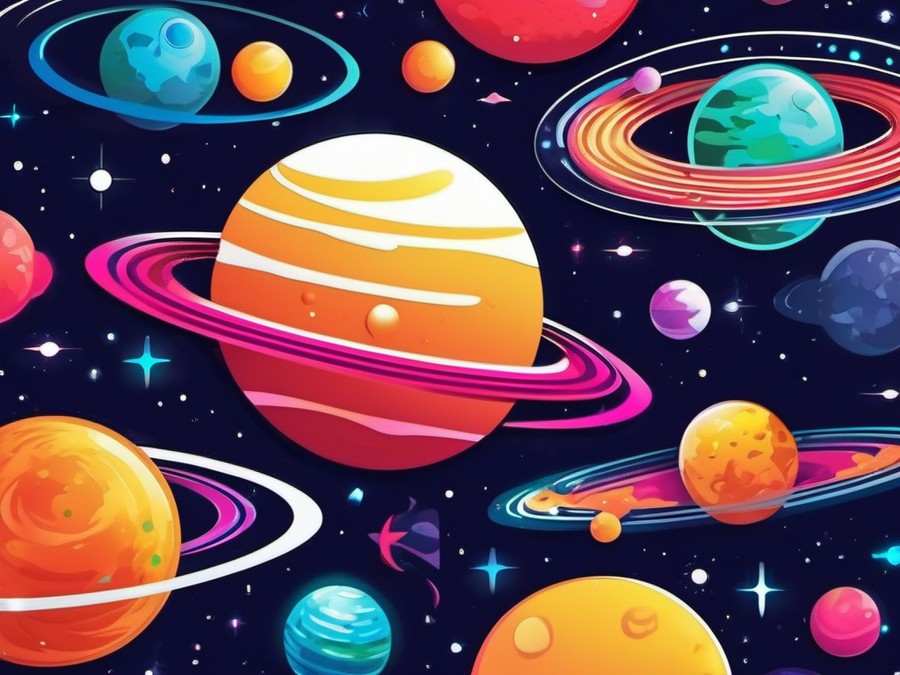· Charlotte Will · External Components · 8 min read
What is a USB-C Hub and Why Do You Need One?
Learn about USB-C Hubs, why you need one and how to choose the best one for your needs. Discover their benefits and explore types of USB-C Hubs available in the market.

In today’s fast-paced world, staying connected is more important than ever. Laptops and other devices have become our lifelines, allowing us to work, communicate, and entertain ourselves from anywhere. But with the evolution of technology, the number of ports on these devices has dwindled, making it challenging to connect all your gadgets at once. This is where a USB-C Hub comes into play. But what exactly is it, and why do you need one? Let’s dive in!
Understanding the Basics of USB-C Hubs
What Exactly is a USB-C Hub?
A USB-C Hub, also known as a Multiport Adapter or Port Expander, is a device that allows you to connect multiple peripherals to your laptop or other USB-C enabled devices through a single USB-C port. It essentially expands the capabilities of your device by providing additional connectivity options.
Definition and Simple Explanation
Think of a USB-C Hub as an intermediary that takes the limited ports on your device and multiplies them. For example, if you have a laptop with only two USB-C ports, a hub can turn those into multiple USB-A, HDMI, Ethernet, and other types of ports.
The Evolution of Ports
In the past, laptops and computers came with a plethora of ports—USB-A, HDMI, Ethernet, and sometimes even VGA or DisplayPort. However, as devices became smaller and thinner, manufacturers started reducing the number of ports to save space. The USB-C port emerged as a versatile solution that could handle data transfer, charging, and video output all in one. But with great versatility comes the need for expansion.
Why the Shift to USB-C?
The shift to USB-C is driven by several factors:
Benefits of USB-C Over Other Ports
- Versatility: USB-C can handle various types of data, including audio and video, making it a one-stop solution.
- Speed: It supports faster data transfer speeds, crucial for modern workflows.
- Power Delivery: USB-C can charge devices quickly, which is a game-changer for many users.
Industry Trends and Adoption
Many tech companies, from Apple to Dell, have started adopting USB-C as the standard port. This trend is likely to continue as more devices become compatible with this versatile connector.
The Problem with Modern Laptops
Limited Ports on Newer Devices
One of the most significant drawbacks of modern laptops is the limited number of ports. While USB-C offers many benefits, it can be constraining if you need to connect multiple devices simultaneously. This is where a USB-C Hub steps in to save the day.
Impact on Productivity and Usability
Imagine needing to connect an external monitor, a keyboard, a mouse, and a few USB dongles. Without a hub, you’d be juggling multiple adapters and swapping devices constantly, which can be frustrating and time-consuming.
Real-Life Examples
Consider a digital nomad who works from different locations. They might need to connect an external monitor, keyboard, mouse, and a card reader for their photography work. A USB-C Hub allows them to do all this through a single port, ensuring a clutter-free workspace.
What is a USB-C Hub and How Does It Work?
Key Features of a USB-C Hub
Port Expansion
The primary function is to expand the number of available ports. Whether you need USB-A, HDMI, Ethernet, or SD card slots, a good hub will have you covered.
Compatibility and Versatility
Most USB-C Hubs are designed to be compatible with a wide range of devices, ensuring you can seamlessly connect peripherals from various manufacturers.
How a USB-C Hub Functions
Data Transfer and Power Delivery
A USB-C Hub typically acts as a bridge between your device and the connected peripherals. It handles data transfer efficiently, ensuring that you don’t experience any lag or performance issues. Additionally, many hubs support power delivery (PD), allowing you to charge your laptop while using the hub.
Enhancing Compatibility with Older Devices
If you have older USB devices, a USB-C Hub can help you connect them to your modern laptop without any complications.
Benefits of Using a USB-C Hub
Enhanced Connectivity Options
Support for Multiple Devices Simultaneously
With a USB-C Hub, you can connect various devices at the same time, making it perfect for multitasking.
Ease of Use and Portability
Hubs are generally compact and lightweight, making them easy to carry around. Whether you’re traveling for work or commuting daily, a hub ensures you’re always prepared.
Improved Workflow and Productivity
Streamlined Task Management
By eliminating the need to swap out devices and adapters, a USB-C Hub helps streamline your workflow. You can focus on getting things done instead of dealing with technical hassles.
Case Studies and Real-World Applications
Professionals across various fields find USB-C Hubs indispensable. From graphic designers who need multiple monitors to photographers who require card readers, the applications are endless.
Types of USB-C Hubs Available in the Market
Basic Multiport Adapters
These are entry-level hubs that offer a few additional ports. They are usually affordable and suitable for basic tasks like connecting a keyboard and mouse.
Suitable Use Cases
- Ideal for casual users or those on a budget.
- Perfect for basic connectivity needs.
Limitations and Considerations
- Might not support high-speed data transfer or power delivery.
- May have compatibility issues with certain devices.
Advanced USB-C Hubs with Additional Features
These hubs come with a plethora of extra features designed to enhance your connectivity experience.
Built-in SD Card Reader and Other Extras
Many advanced hubs include built-in SD card readers, microSD slots, and sometimes even USB-A or HDMI ports.
High-Speed Data Transfer and Power Delivery
These hubs are equipped to handle high-speed data transfer, ensuring that your workflow remains smooth and efficient. Additionally, many support power delivery (PD), allowing you to charge your devices while in use.
Choosing the Right USB-C Hub for Your Needs
Factors to Consider Before Making a Purchase
Compatibility and Port Requirements
Ensure the hub you choose is compatible with your device. Check the specifications to see if it supports the types of ports and features you need.
Budget and Long-Term Value
While basic hubs are affordable, investing in a more advanced model can provide better long-term value. Consider your future needs and buy accordingly.
Top USB-C Hubs in the Market Today
Recommended Products for Different Usage Scenarios
There are numerous high-quality USB-C Hubs available. Here are a few recommendations:
- For Casual Users: Basic multiport adapters that offer a balance between affordability and functionality.
- For Professionals: Advanced hubs with additional features like SD card readers and support for high-speed data transfer.
- For Power Users: Hubs with extensive port options, power delivery support, and advanced features like 4K video output.
User Reviews and Expert Opinions
When choosing a hub, it’s essential to read user reviews and expert opinions. Websites like Amazon and TechRadar often provide in-depth reviews that can help you make an informed decision.
How to Use a USB-C Hub Effectively
Setting Up Your USB-C Hub
Step-by-Step Guide for First-Time Users
- Unbox the Hub: Carefully remove it from its packaging.
- Connect to Your Device: Plug the USB-C end into your laptop or other USB-C enabled devices.
- Connect Your Peripherals: Attach your external monitors, keyboards, mice, and other devices to the available ports on the hub.
- Power On: Turn on your device, and you should be good to go!
Troubleshooting Common Issues
If you encounter any issues, make sure all connections are secure and try restarting your device. If the problem persists, consult the manufacturer’s support or user manual for further assistance.
Optimizing Your Workspace with a USB-C Hub
Best Practices for Enhanced Productivity
- Organize Your Cables: Use cable management solutions to keep your workspace tidy and clutter-free.
- Create a Dedicated Workspace: Set up a dedicated space for your laptop and peripherals to ensure consistent productivity.
- Regular Maintenance: Keep your hub clean and free from dust to maintain optimal performance.
Tips for Long-Term Maintenance
Periodically check all connections to ensure they are tight and secure. If you notice any signs of wear or damage, consider replacing the hub to maintain its functionality.
Conclusion: Embracing the Future of Connectivity
The Role of USB-C Hubs in Modern Technology
USB-C Hubs have become an essential component of modern technology, bridging the gap between limited ports and multiple connectivity needs.
Adapting to the Ever-Changing Tech Landscape
As technology continues to evolve, the demand for versatile and efficient solutions like USB-C Hubs will only increase. Staying connected and productive is more important than ever in our fast-paced world.
The Importance of Staying Connected and Productive
Whether you’re a casual user or a professional, investing in a quality USB-C Hub ensures that you remain connected and productive. With the right hub, you can turn your single USB-C port into a multifunctional powerhouse, simplifying your workflow and enhancing your overall experience.
FAQs
Q: Can a USB-C Hub damage my laptop? A: No, but it’s important to choose a compatible and reliable hub. Make sure the hub supports your device’s specifications to avoid any potential issues.
Q: How many ports should my USB-C Hub have? A: It depends on your specific needs. Ensure the hub has at least one port for each device you plan to connect simultaneously. If you have multiple peripherals, consider a hub with additional ports for future expansion.
Q: Can I use a USB-C Hub with my older laptop? A: Yes, but you may need an adapter to connect the hub to your laptop. Ensure that the hub and any necessary adapters are compatible with your older device.
Q: What is a powered USB-C Hub? A: A powered hub has its own power source, usually through an external power adapter. This allows it to provide power to connected devices that require more than what the laptop can supply through a single USB-C port.
Q: How long do USB-C Hubs last? A: The lifespan varies based on usage and quality. High-end products with solid construction can last for several years, making them a worthwhile investment. Regular maintenance and care can also extend their lifespan.
By understanding the role and benefits of a USB-C Hub, you can enhance your connectivity experience and stay productive in today’s fast-paced world.




